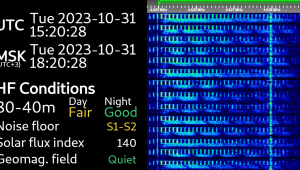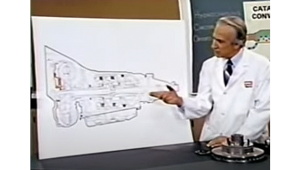Road Gear

I have two cars but only a one-car garage. As you might expect, my favorite car (a red 1968 Porsche 911 Targa) gets the garage. Plus, since it’s vintage, it deserves indoor parking. From a performance standpoint, that car is still impressive. It’s lightweight, with lots of horsepower, and since the laws of physics haven’t changed in the last 4 decades, it can blow away most modern cars.
But technology has changed quite a bit, and from an electronics standpoint, my car is positively antediluvian. When it comes to bits and bytes, the car doesn’t have any. No computers, touchscreens, signal processors, sensors, or data buses. Drive by wire? Certainly not! When I put my foot down, a steel cable tugs open the butterfly valves on the big Weber carburetors, and air and gas pour in.
Modern cars are crammed with cool digital stuff. As a result, compared with old cars, modern cars are much safer and more fuel-efficient. And if they’re not always more fun to drive, modern cars are at least more entertaining. Many now have a USB port, Bluetooth, GPS, etc. It was Ford’s Sync that first consolidated many of these elements and demonstrated the synergies they could provide. For example, with Sync, you can use voice commands to make hands-free phone calls and control the onboard entertainment system, as well as Bluetooth phones, and iPods and other MP3 players. It can also read text messages aloud with “Samantha,” a voice synthesizer. Sync calls the local 911 if your airbags deploy, and provides traffic alerts and turn-by-turn navigation. Newer Sync systems can access Pandora through your phone.
That’s pretty neat, but it’s only the beginning. Tons of new car technology is already arriving in showrooms. Most significantly, cars will be rolling out Wi-Fi hubs, allowing occupants and their devices, as well as the car itself, to continuously access the Internet. Software updates, road/traffic/weather conditions, parking space availability, social media, and streaming entertainment content will all be available online.
Interestingly, when a Wi-Fi router becomes commonplace in cars, another commonplace car device might disappear. Why bother with a radio or any other kind of source unit? Everything that a radio does can be done better with Internet streams. Moreover, with everyone in the car packing phones that are stuffed with their favorite entertainment, and with the phones talking to both the Internet and the car, there won’t be much need for built-in content sources. Whether it’s via Bluetooth, Wi-Fi, or wired connections, phones will direct their music, video, games, and whatever else to the car’s video monitors, amplifiers, and speakers.
Along the same lines, car dashboards could simply become docking stations for tablet computers. Why build in computers and screens when you never leave home without your tablet? I suppose if you lose your tablet, the car could still be drivable with an onboard contingency system. In any case (ignoring liability issues for the moment), cars could be designed to operate primarily with your tablet or phone as the controlling brain. Connectivity will let the phone control the car and let the car control the phone.
Aside from weight and cost savings, phone control also allows remote control. Apps for the Chevy Volt let you control when the car charges itself (for example, to take advantage of off-peak electricity pricing). Likewise, cars can alert you when they need maintenance or when they’re being stolen. For that matter, your phone could replace your car keys.
Of course, many of these features are already available on select cars. The technology will gradually trickle through all the model lineups, and in-car connectivity will become ubiquitous. Heck, you’ll even pay for gas (or electricity) with your phone.
Speaking of which, thanks to those big Weber carbs, my ’68 Porsche gets less than 15 miles a gallon. It sure is fun to drive, but I wish miles per hour were as cheap as bits per second.
- Log in or register to post comments































































